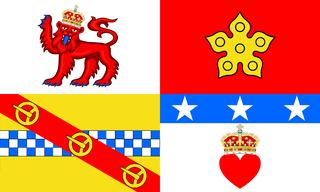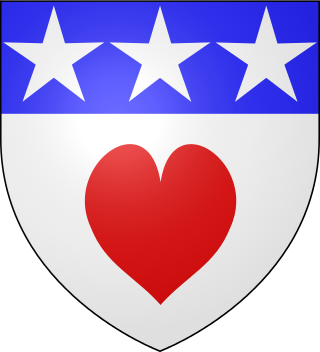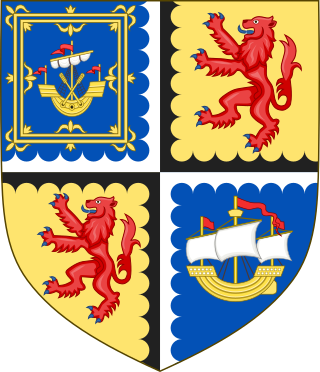
The Mormaer or Earl of Angus was the ruler of the medieval Scottish province of Angus. The title, in the Peerage of Scotland, is held by the Duke of Hamilton, and is used as a courtesy title for the eldest son of the Duke's eldest son.
Archibald Douglas, 8th Earl of Angus and 5th Earl of Morton was a Scottish aristocrat.
Patrick Hepburn, 1st Earl of Bothwell was Lord High Admiral of Scotland. He rose to political prominence after supporting James IV against his father, and was proxy at the King's marriage.

This page is concerned with the holders of the forfeit title Earl of Douglas and the preceding feudal barons of Douglas, South Lanarkshire. The title was created in the Peerage of Scotland in 1358 for William Douglas, 1st Earl of Douglas, son of Sir Archibald Douglas, Guardian of Scotland. The Earldom was forfeited by James Douglas, 9th Earl of Douglas, in 1455.
William Douglas, 6th Earl of Morton was the son of Robert Douglas of Lochleven and Margaret Erskine, a former mistress of James V of Scotland.

The North Berwick witch trials were the trials in 1590 of a number of people from East Lothian, Scotland, accused of witchcraft in the St Andrew's Auld Kirk in North Berwick on Halloween night. They ran for two years, and implicated over 70 people. These included Francis Stewart, 5th Earl of Bothwell, on charges of high treason.
George Douglas, 1st Earl of Angus (1380–1403) was a Scottish nobleman and peer.
Sir Robert Douglas of Glenbervie, 6th Baronet was a notable genealogist responsible for one of the major works on Scottish families, The Baronage of Scotland.
Sir William Douglas, known as 'Longleg', was a Scottish knight. He was the son of Archibald I, Lord of Douglas.
David Hume or Home of Godscroft (1558–1629) was a Scottish historian and political theorist, poet and controversialist, a major intellectual figure in Jacobean Scotland. It has been said that "Hume marks the culmination of the Scottish humanist tradition."

Sir William Douglas of Glenbervie, Knt. was a Scottish nobleman, who fell at Flodden.

Sir Archibald Douglas of Glenbervie was a Scottish nobleman.
William Douglas, 1st Marquess of Douglas and 11th Earl of Angus (1589–1660) was a Scottish nobleman.
Sir John Carmichael was a Scottish soldier, the Keeper of Liddesdale, a diplomat, and owner of Fenton Tower at Kingston, East Lothian.
David Douglas, 7th Earl of Angus was a Scottish nobleman.

Alexander Erskine of Gogar was a Scottish landowner and keeper of James VI of Scotland at Stirling Castle.

Cavers Castle, also known as Cavers House, is a ruined tower house located at Cavers, Scottish Borders, Scotland. Cavers Castle was a much extended tower house of the Douglas family dating back to the 15th or 16th century, and built upon the site of an earlier stronghold of the Balliols. It was repeatedly attacked during the 16th century wars with England, and substantially remodelled in the 17th century to form a mansion house, itself extended and remodelled in baronial style by Peddie and McKay in the 1890s. It was eventually deroofed and partially demolished in the 1950s, and was sold most recently in 2019. There are developing plans to restore the building, which is a listed building.

George Sinclair was a Scottish nobleman, the 5th Earl of Caithness and chief of the Clan Sinclair, a Scottish clan based in northern Scotland.
Jean Lyon, Countess of Angus was a Scottish courtier and landowner, who became involved in a witchcraft trial.

James Douglas of Spott was a Scottish landowner and conspirator.
 One or more of the preceding sentences incorporates text from this source, which is in the public domain : Anderson 1863
One or more of the preceding sentences incorporates text from this source, which is in the public domain : Anderson 1863 






